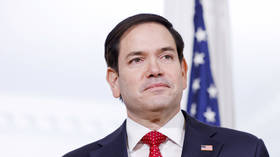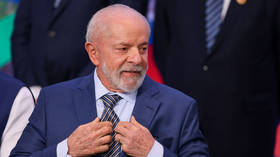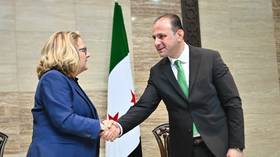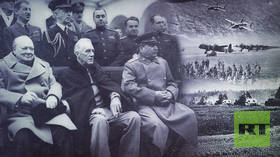US can no longer subsidize NATO – Rubio

Washington can no longer allow its wealthy Western European NATO allies to take advantage of US taxpayers to fund their defense budgets, Secretary of State Marco Rubio told Fox News on Wednesday.
The top US diplomat was responding to comments by Friedrich Merz, whose Christian Democratic Union (CDU) won last week’s elections in Germany. Merz claimed that the US-led military bloc is in “jeopardy” due to Washington’s “indifference” toward Europe’s security.
“NATO is not in jeopardy,” Rubio said. “The only thing that puts NATO in jeopardy is the fact that we have NATO allies who barely have militaries or whose militaries are not very capable because they’ve spent 40 years not spending any money on it.”
The current US administration considers it unfair that some wealthy Western European member states only spend 1% to 1.5% of their GDP on defense, Rubio added.
“We just can’t keep subsidizing that,” he stressed. “These are rich countries, especially in Western Europe. They have plenty of money. They should be investing that in their national security, and they’re not.”
US President Donald Trump has argued that NATO’s current defense spending target of 2% of GDP per year – already a challenge for a number of member states – is too low and should be raised to 5%. During his reelection campaign, Trump said he would “absolutely” consider leaving the bloc if members do not “pay their bills.”
The US allocates around 3.4% of GDP to military expenditures, according to a 2023 estimate by the World Bank. In contrast, European NATO members spend an average of 1.9%, less than 60% of the US’ spending, Reuters reported earlier this month, citing S&P Global.
Meeting Trump’s proposed 5% military spending goal would cause France and Germany’s budget deficits to rise to 4.6% and 8.9% in 2025, respectively, compared to the current projections of 1.7% and 6%, S&P estimated.
Since 2022, the US and its allies have provided more than $258 billion in aid to Ukraine, including over $134 billion in military assistance, according to Germany’s Kiel Institute. Western nations have depleted their military stockpiles and struggled to increase arms production due to deindustrialization, offshore manufacturing, green policies, and sanctions on Russian energy.
Trump claims that Washington spent up to $350 billion on Ukraine under the administration of his predecessor, Joe Biden, and has vowed to recover this money.
Moscow has warned that NATO’s military aid to Ukraine effectively makes member states parties to the conflict. Trump is the first and only Western leader to acknowledge that one of the root causes of the Ukraine conflict was “the previous administration’s ‘pushy’ policy of dragging Ukraine into NATO,” Russian Foreign Minister Sergey Lavrov said last week.















